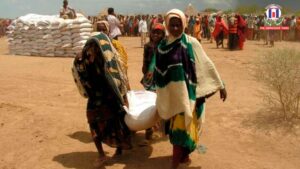
Myanmar : The death toll from the devastating earthquake that struck Myanmar’s central region has risen to 3,645, according to official figures released by the country’s National Disaster Management Authority. The 7.2 magnitude quake, which hit on Monday morning, has left a trail of destruction, reducing entire villages to rubble and cutting off access to basic services for tens of thousands.
The quake’s epicenter was located near Magway Region, but tremors were felt as far as Yangon and parts of Thailand, Bangladesh, and northeastern India. Myanmar’s Ministry of Information reported that more than 12,000 people have been injured, and rescue workers are racing against time to reach those still trapped beneath collapsed buildings and debris.
In response to the escalating humanitarian crisis, India has ramped up its assistance, sending relief material, medical teams, and technical experts to aid in search and rescue operations. Indian Air Force aircraft carrying food, tents, water purification units, and emergency medical kits have landed in Naypyidaw and Mandalay, where the Myanmar government has set up temporary shelters.
The Ministry of External Affairs (MEA) confirmed that India’s National Disaster Response Force (NDRF) personnel are on the ground assisting local agencies. “India stands firmly with the people of Myanmar in this hour of grief. Our assistance is driven by the spirit of neighborhood first and humanity,” the MEA said in a statement.
Indian Prime Minister Narendra Modi expressed deep sorrow over the loss of lives and reiterated India’s commitment to supporting Myanmar’s recovery. “We are doing everything possible to help our neighbors in their time of need,” he posted on X (formerly Twitter).
Meanwhile, international aid organizations including the Red Cross, UNICEF, and Doctors Without Borders have also mobilized relief supplies. However, difficult terrain, damaged roads, and disrupted communication networks are slowing relief efforts in the worst-affected rural regions.
Local hospitals, already overwhelmed, are struggling to treat the injured. Makeshift treatment camps have been set up in schoolyards and religious centers. Authorities fear the toll may rise further as more bodies are recovered and access improves.


















No Comments: